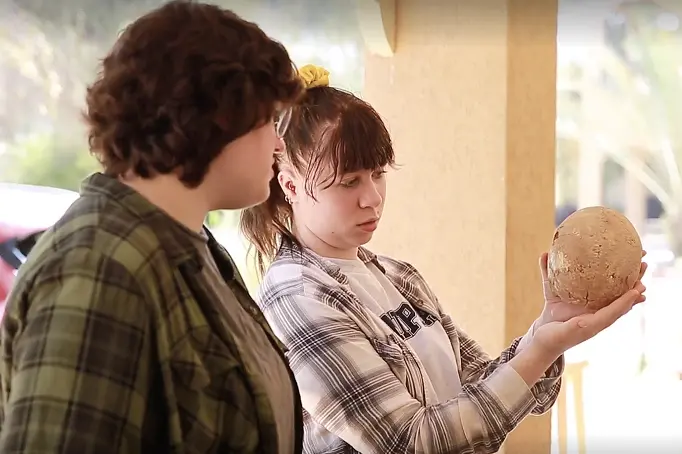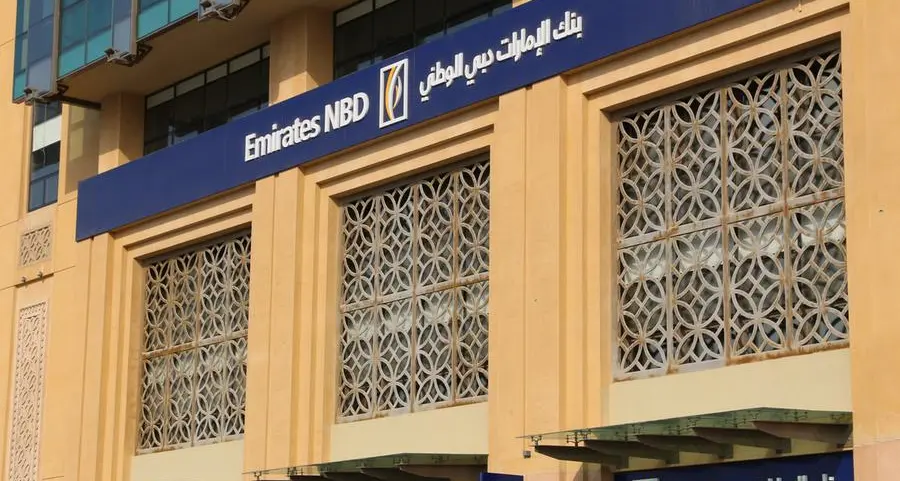PHOTO
RAS AL KHAIMAH, UAE: Archaeologists in Ras Al Khaimah have partnered with two United States universities to analyze 4,000-year-old human remains to see if a dramatic climate event at that time can help inform how humans’ biology would be affected by a similar event in the future.
A professor and student team of bio-anthropologists from Quinnipiac University, Connecticut, U.S., led by Professor Jaime Ullinger, recently visited archaeologists at Ras Al Khaimah Department of Antiquities & Museums to study human skeletons from the 2nd millennium BC to analyze their potential in bio-archaeological studies, with the goal being to research the effects of climate change on human biology between the Umm Al Nar and Wadi Suq periods in Ras Al Khaimah. The human remains are from a time of severe climate change characterized by drought.
The visit is part of an ongoing collaboration, named The Bio-Archaeology of Bronze Age Social Systems, between Ras Al Khaimah Department of Antiquities & Museums, Quinnipiac and the University of South Alabama, with professors and students from both universities expected to return to Ras Al Khaimah before the end of the year.
During a previous visit to Ras Al Khaimah in 2017, university teams worked on human remains to study the diet, health and behavior of the Umm Al Nar people and their funeral practices. The human bones studied were found in Ras Al Khaimah’s Shimal - a prominent archaeological site dating back to the Umm Al Nar culture (2,600 to 2,000BC) - where archaeologists previously discovered evidence for prehistoric tombs, settlements and a medieval fortress.
The recent visit to Ras Al Khaimah was a preliminary trip to assess the human remains and there is scope for the remains to be taken to the United States for further analysis, and for informative workshops to be conducted with the community in Ras Al Khaimah.
Ahmed Obaid Al Teneiji, Director General of Ras Al Khaimah Department of Antiquities and Museums, said: “This partnership with Quinnipiac University and University of South Alabama ties with the strategic vision of Ras Al Khaimah Government to highlight the long and rich history of the Emirate and the UAE to our people and the world at large.
“This is a great opportunity for us to examine the human remains found at the multiple ancient tombs across Ras Al Khaimah to understand more about the lives of the people who lived here thousands of years ago and how climate change affected them, which carries real-world implications in modern times.”
Christian Velde, Chief Archaeologist at Ras Al Khaimah Department of Antiquities and Museums, said: “Ras Al Khaimah is quite unique as we have a large number of tombs and other archaeological sites dating from a time when there is little remaining evidence of human civilization in other parts of the region. From these sites we have unearthed many remains that the Quinnipiac team want to study and feel can provide great insights on human development at this time.
“This partnership is exciting as it will hopefully allow us to understand more about the people who lived here 4,000 years ago and see how a period of extreme drought, lasting for over 100 years, affected their lives. We hope that this will be a long-standing relationship and we look forward to welcoming more professors and students to Ras Al Khaimah.”
Jaime Ullinger, Professor of Anthropology, Co-Director of the Bioanthropology Research Institute at Quinnipiac University, said: “Ras Al Khaimah has a rich archaeological history and the tombs here are large and interesting communal tombs, which are ideal for this type of study. Already we’ve seen bones from the smallest babies to older individuals and we will be analyzing them to check for changes in health – is there more disease or infant mortality, for instance, due to the climactic changes? – though we need to collect a lot more data before we can draw conclusions.
“This is also an important partnership for our students as it gives them a chance to visit the UAE and learn more about archaeology in this region, and we also want to bring this project into the local community in Ras Al Khaimah, to engage people in workshops and share our findings with them.”
Watch the full video here.
-Ends-
For media enquiries:
Amal Ebrahim Al Nuaimi, Manager, Institutional Communication Office
Ras Al Khaimah Department of Antiquities and Museums
Amal.alnuaime@museum.rak.ae
About Ras Al Khaimah
Ras Al Khaimah (RAK) is the northernmost of the seven Emirates that make up the United Arab Emirates. It is known for its diverse landscape, from 64km of beaches, to deserts and imposing mountains, as well as its rich history, dating back 7,000 years. It has many archaeological sites, four of which have been shortlisted on UNESCO’s tentative list of World Heritage Sites. The Emirate’s Jebel Jais mountain, which is the highest mountain in the UAE, boasts attractions including Jebel Jais Flight, the world’s longest zip line at almost 3km, and 1484 by Puro, the UAE’s highest restaurant. Ras Al Khaimah is centrally located at the modern crossroads between Europe, Asia and Africa, with one third of the world’s population within four hours’ flying time, making it an ideal location for businesses to expand into the UAE, the Middle East and Africa region and beyond. The Emirate boasts one of the most diverse economies in the region, with no single sector accounting for more than 26% of the Emirate’s GDP – a critical advantage that enhances Ras Al Khaimah’s economic flexibility and strength. For more than a decade, Ras Al Khaimah has been consistently rated in the ‘A’ range by Fitch and Standard & Poor’s international ratings agencies. Ras Al Khaimah is a multicultural society, with an estimated population of 0.4 million people in 2021. With year-round sunshine, straightforward business set-up and a competitive and affordable cost of living, Ras Al Khaimah is the informed choice for business, lifestyle and exploration.
About Quinnipiac University
Quinnipiac is a private, coeducational, institution located 90 minutes north of New York City and two hours from Boston. The university enrolls 9,000 students in 110 degree programs through its Schools of Business, Communications, Education, Computing and Engineering, Health Sciences, Law, Medicine, Nursing and the College of Arts and Sciences. Quinnipiac is recognized by U.S. News & World Report and Princeton Review’s “The Best 388 Colleges.” For more information, please visit qu.edu. Connect with Quinnipiac on Facebook and follow Quinnipiac on Twitter @QuinnipiacU.




















